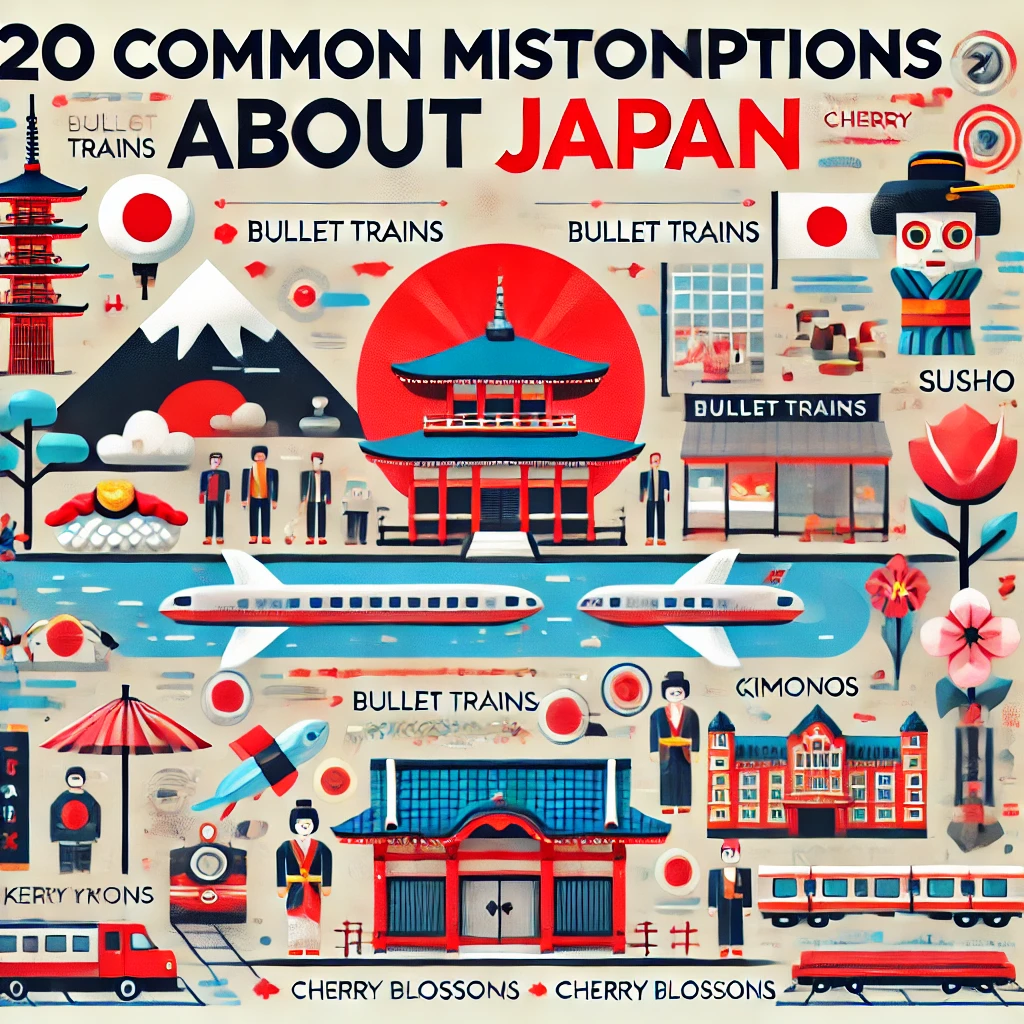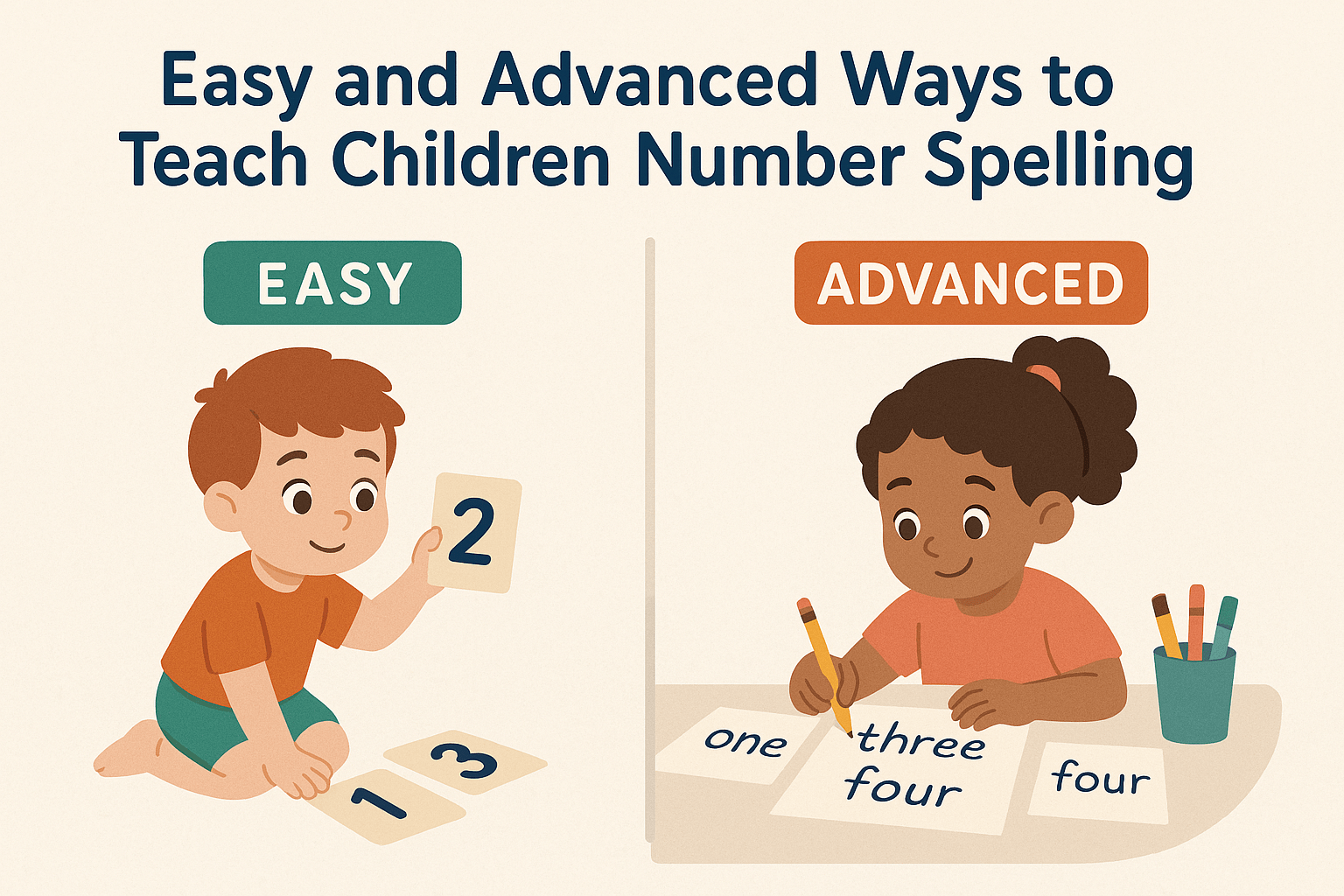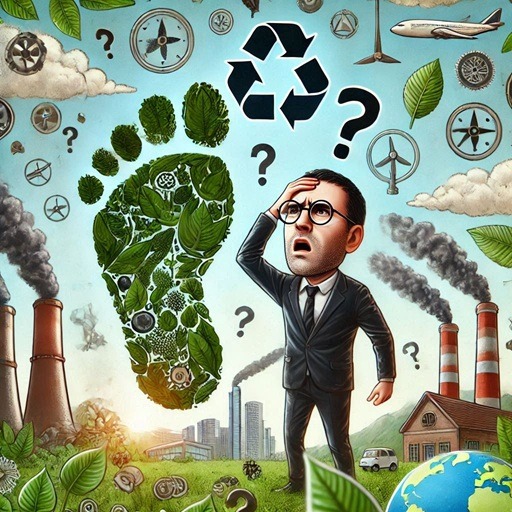Japan is a country that has long fascinated the world with its unique blend of tradition and modernity. From its cutting-edge technology to its rich cultural heritage, Japan is often romanticized and misunderstood. While many perceptions about Japan are rooted in truth, there are numerous misconceptions that persist, shaping how the world views this fascinating nation. In this blog, we will explore and debunk 21 common misconceptions about Japan, shedding light on the realities of life in the Land of the Rising Sun.
1. Japan is a Futuristic Society
Misconception: Japan is often portrayed as a futuristic society where robots roam the streets, and technology dominates every aspect of life.
Reality: While Japan is indeed a leader in technological innovation, it is not the sci-fi utopia many imagine. Many aspects of Japanese society remain deeply rooted in tradition. For example:
- Cash-Based Transactions: Despite being a tech-savvy nation, Japan still heavily relies on cash. Many small businesses, local shops, and even some restaurants do not accept credit cards or digital payments.
- Outdated Paperwork: Bureaucratic processes in Japan often involve extensive paperwork, seals (hanko), and fax machines, which can feel archaic compared to the digital systems used in other developed countries.
- Traditional Practices: From tea ceremonies to festivals, traditional customs and practices remain an integral part of Japanese life.
Japan’s futuristic image is largely concentrated in specific areas like Tokyo’s Akihabara district or Osaka’s tech hubs. Outside these urban centers, life often moves at a slower, more traditional pace.
2. Japanese Food is All About Sushi & Ramen
Misconception: When people think of Japanese cuisine, sushi and ramen are often the first dishes that come to mind.
Reality: Japanese cuisine is incredibly diverse, with a wide variety of dishes that go far beyond sushi and ramen. Here are some examples:
- Tempura: Lightly battered and deep-fried seafood or vegetables.
- Yakitori: Grilled chicken skewers, often served at izakayas (Japanese pubs).
- Okonomiyaki: A savory pancake made with flour, eggs, cabbage, and various toppings.
- Natto: Fermented soybeans, a polarizing dish due to its strong flavor and sticky texture.
- Regional Specialties: Each region in Japan has its own unique dishes, such as Hiroshima-style okonomiyaki, Hokkaido’s seafood, and Okinawa’s goya champuru.
Japanese cuisine is a reflection of the country’s geography, history, and seasons, offering a rich culinary experience that extends far beyond sushi and ramen.
3. Japan is Extremely Expensive
Misconception: Japan is often perceived as an expensive destination, deterring budget-conscious travelers.
Reality: While Japan can be pricey, it is also possible to experience the country on a budget. Here’s how:
- Affordable Accommodations: Capsule hotels, hostels, and business hotels offer comfortable stays at reasonable prices.
- Cheap Eats: Convenience stores (konbini) like 7-Eleven, FamilyMart, and Lawson provide affordable and delicious meals, including onigiri (rice balls), bento boxes, and sandwiches.
- Budget Travel: Japan’s extensive public transportation network, including regional rail passes, makes travel affordable and convenient.
- Free Attractions: Many temples, shrines, and parks are free to visit, and cities like Kyoto and Nara offer plenty of low-cost cultural experiences.
While cities like Tokyo and Osaka can be expensive, rural areas and smaller towns are often much more affordable.
4. All Japanese People Wear Kimonos
Misconception: Many people imagine Japanese citizens strolling through the streets in traditional kimonos.
Reality: Kimonos are typically reserved for special occasions, such as festivals, weddings, and tea ceremonies. In daily life, most Japanese people wear modern Western-style clothing. Kimonos are more commonly seen in tourist areas or during cultural events, where they are worn to celebrate tradition rather than as everyday attire.
5. You Need to Learn Complex Etiquette Rules
Misconception: Japan is often seen as a country with strict and complex etiquette rules that can be intimidating for visitors.
Reality: While Japan does have cultural customs, tourists are not expected to master them. Basic politeness, such as bowing, removing shoes before entering homes, and saying “arigatou” (thank you), is sufficient. Japanese people are generally understanding and appreciative of foreigners who make an effort to respect their culture, even if they don’t get everything right.
6. Can One Pay by Credit Card in Japan?
Misconception: Japan is a technologically advanced country, so credit cards must be widely accepted.
Reality: While major cities and chain stores accept credit cards and digital payments, many smaller shops, local restaurants, and rural areas still prefer cash. It’s always a good idea to carry yen when traveling in Japan, especially outside urban centers.
7. Japan’s Bullet Train is Never Late
Misconception: Japan’s Shinkansen (bullet train) is famous for its punctuality and never experiences delays.
Reality: While the Shinkansen is incredibly reliable, delays can occur due to factors like severe weather, technical issues, or natural disasters such as earthquakes. When delays happen, announcements are made, and passengers are informed, but apologies are not always explicitly given, as punctuality is already deeply ingrained in the system.
8. Japan Never Buys American Things
Misconception: Japan is often seen as a closed-off society that doesn’t embrace foreign products.
Reality: Japan imports a wide range of American products, including fashion brands like Levi’s and Nike, fast food chains like McDonald’s, KFC, and Starbucks, and tech gadgets like iPhones. American culture, from Hollywood movies to music, also has a significant influence in Japan.
9. Japanese People Work Like Robots
Misconception: Japanese workers are often stereotyped as overworked, emotionless robots.
Reality: While Japan has a strong work ethic and a history of long working hours, attitudes are changing. Younger generations are prioritizing work-life balance, and companies are increasingly adopting policies to reduce overtime and promote employee well-being. The image of the “salaryman” working late into the night is no longer the universal reality.
10. Japanese People Are Always Polite
Misconception: Japanese people are often portrayed as perpetually polite and reserved.
Reality: While politeness is a valued cultural trait, Japanese people are human and express a full range of emotions. In certain situations, such as crowded trains or busy streets, people can be direct or even frustrated. The idea that Japanese people are always polite is an oversimplification of a complex culture.
11. Japan is the Cleanest Country in the World
Misconception: Japan is often hailed as the cleanest country, with spotless streets and public spaces.
Reality: While Japan is generally clean, it is not without its litter. Nightlife districts like Kabukicho in Tokyo or Dotonbori in Osaka can have trash on the streets, especially after busy nights. The cleanliness of Japan is largely due to strong social responsibility and community efforts rather than strict laws.
12. Everyone in Japan Loves Anime & Manga
Misconception: Anime and manga are synonymous with Japanese culture, and everyone in Japan is a fan.
Reality: While anime and manga are popular, they are not universally loved. Many adults do not watch anime or read manga regularly, and the industry caters to a niche audience. While these art forms are an important part of Japanese culture, they do not define the entire population.
13. Japan Has No Crime
Misconception: Japan is often seen as a crime-free utopia.
Reality: While Japan has low crime rates compared to many other countries, crime still exists. Theft, scams, and organized crime (yakuza) are present, though they are less visible than in other nations. Japan’s reputation for safety is largely due to effective policing and strong community ties.
14. Japanese Schools Are Super Strict & Perfect
Misconception: Japanese schools are often idealized as strict, disciplined, and perfect institutions.
Reality: While Japanese schools emphasize discipline, they face challenges such as intense entrance exams, bullying, and pressure on students. The education system is rigorous, but it is not without its flaws.
15. Japanese Toilets Are All High-Tech
Misconception: Japan is famous for its high-tech bidet toilets, leading many to believe all toilets in Japan are advanced.
Reality: While high-tech toilets are common, especially in urban areas, many older buildings and rural areas still use traditional squat toilets. The image of Japan as a nation of futuristic toilets is only partially accurate.
16. Everyone in Japan Speaks English
Misconception: English is widely spoken in Japan, making it easy for tourists to communicate.
Reality: While English is taught in schools, many Japanese people are not fluent or confident in speaking it. In major cities, you may find English signage and some English-speaking staff, but in rural areas, communication can be challenging.
17. Japan is a Tiny, Overcrowded Country
Misconception: Japan is often perceived as a small, overcrowded nation.
Reality: While cities like Tokyo and Osaka are densely populated, much of Japan consists of countryside, mountains, and rural areas with low population density. The country’s geography is diverse, offering everything from bustling urban centers to serene natural landscapes.
18. Japanese Women Are All Submissive & Traditional
Misconception: Japanese women are often stereotyped as submissive and traditional.
Reality: Japanese women have diverse lifestyles and career choices. Many are independent professionals, entrepreneurs, or activists. While traditional gender roles still exist, they are increasingly being challenged by modern Japanese women.
19. Cherry Blossoms Last a Long Time
Misconception: The cherry blossoms (sakura) in Japan bloom for an extended period.
Reality: The sakura bloom is fleeting, lasting only about a week. The exact timing varies depending on the region and weather conditions, making it a highly anticipated and cherished event.
20. Japanese People Don’t Like Foreigners (Gaijin)
Misconception: Japanese people are unwelcoming to foreigners.
Reality: While cultural barriers exist, many Japanese people are curious and welcoming to foreigners, especially those who show respect for their culture. The perception that Japanese people only welcome visitors from wealthy countries like the USA or EU is not universally true.
21. Japan Has 6G While the World Has 5G
Misconception: Japan is ahead of the world in internet technology, with 6G already in use.
Reality: Japan’s internet infrastructure is advanced, but it is not significantly ahead of other developed countries. In fact, internet speeds in Japan can be slower than in some nations, and the adoption of online payments lags behind countries like China and South Korea.
Conclusion
Japan is a country of contrasts, where tradition and modernity coexist in fascinating ways. While many perceptions about Japan are rooted in truth, it’s important to recognize the nuances and complexities that define this nation. By debunking these 21 common misconceptions, we gain a deeper understanding of Japan’s culture, society, and people. Whether you’re planning a trip or simply curious about this captivating country, approaching Japan with an open mind and a willingness to learn will enrich your experience and appreciation of its unique charm.









Leave a Reply